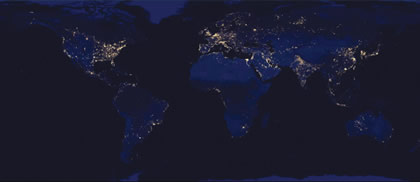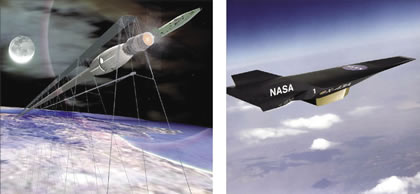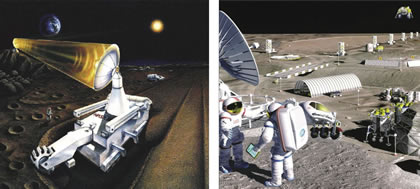U.S.-China Cooperation on the Belt and Road Initiative
and Corresponding Ideas in Chinese and Western Philosophy
April 13-14, 2017
New York City
From the New Silk Road to Space:
LaRouche’s Economic Platform Concept
by
Benjamin Deniston
Transcript
LaRouche’s Economic Platform Concept
A PDF version of this transcript appears in the May 5, 2017 issue of Executive Intelligence Review and is re-published here with permission.
Benjamin Deniston, a member of Lyndon LaRouche’s Scientific Research Team, concludes the Second Panel of the Schiller Institute Conference of April 13-14 in New York.
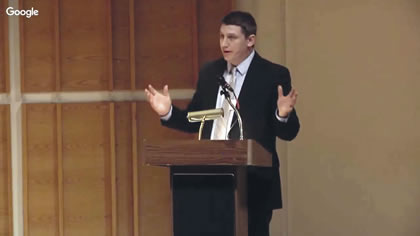
Benjamin Deniston |
We’ve gone through a lot. I would like to take a few minutes to step back and again review the New Silk Road and its expansion into the World Land-Bridge, and re-examine all of it, and all its details, from the standpoint of Mr. Lyndon LaRouche’s science of physical economics.
As my colleague Jason Ross discussed at the beginning of this panel, economics is not about money, and it’s not about market analysis, or goods production per se. Rather, you’re looking at the science of how mankind progresses in a completely unique way. Economic progress is a uniquely human characteristic. It is the expression of the absolute distinction of humankind from animal species. Any animal species has a fixed ecology, a fixed relation to its environment, a fixed ecological characteristic. But humankind does not. Humankind is characterized, in its most fundamental essence, by revolutionary transformations and up-shifts in its relation to the environment—transformations created by humankind itself. (This is why the decarbonization and green energy fraud is so dangerous. Carbon dioxide isn’t a problem, and solar and wind power simply can not support the necessary advance of humankind.)
A New Concept of Infrastructure
LaRouche’s science of physical economics allows us to view the New Silk Road and World Land-Bridge as a particular stage in the larger process of human creative development.
A quick way to visualize this is to look at pictures of the Earth at night [Figure 1].
|
Figure 1
|
As indicated by the locations of the lights, we can quickly see that much of the world population, and its economic activity and development, still resides near the coasts—about 40% living within 60 miles of a coast. About 40% of the population lives within perhaps 10% of the area of the continents. An interesting perspective. There are vast interior regions of continents with little or no economic development and very low population density. The interior regions that have been developed are most often associated with rivers, waterways, and rail-lines—but we’ll get into that shortly.
|
Figure 2
The New Silk Road
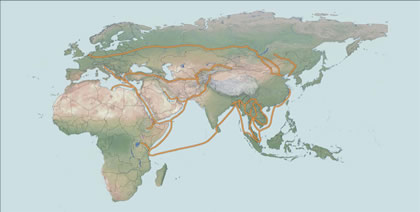 View full size |
We see here the New Silk Road [Figure 2]— composed of six land routes plus the maritime component—which brings new densities of infrastructure development right through many interior regions throughout Eurasia. Many of its routes penetrate through these landlocked, inland regions.
As envisioned by Lyndon and Helga LaRouche, this does more than simply connect existing population centers. It also brings the potential for the development of interior regions in completely new ways. In effect, it enables these inland regions, these landlocked territories, to become as productive, or even more productive, than the coastal regions have been historically.
|
Figure 3
The World Land-Bridge
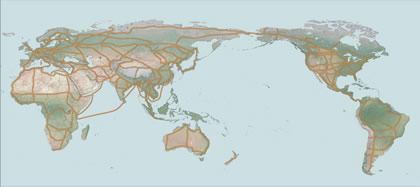 View full size |
This goes further with the full expansion of the New Silk Road into the LaRouches’ vision for the World Land-Bridge [Figure 3]. This will enable the full global development of the interior continental regions—creating the conditions for interior regions to become more productive, and more dense with population and economic activity, than the coastal regions have been.
To appreciate the principle behind this, requires a new conception of infrastructure, rooted in Mr. LaRouche’s science of economics—in particular, an understanding of what infrastructure really means, as the synthetic, man-created environment that Jason Ross spoke about earlier. A synthetic platform for higher levels of civilization. The creation of higher-order such synthetic platforms.
History of Human Development
Recognizing that most people’s conception of infrastructure fell far short, in 2010 Mr. LaRouche introduced this concept of the economic platform.
In his April 2010 paper, “What Your Accountant Never Understood: The Secret Economy,” Mr. LaRouche wrote,
We should then recognize that the development of basic economic infrastructure had always been a needed creation of what is required as a “habitable” development of a “synthetic,” rather than a presumably “natural” environment, for the enhancement, or even the possibility of human life and practice at some time in the existence of our human species. . . .
Man as a creator in the likeness of the great Creator, is expressed by humanity’s creation of the “artificial environments” we sometimes call “infrastructure,” on which both the progress, and even the merely continued existence of civilized society depends.
Mr. LaRouche went on to redefine the history of human development from the standpoint of a succession of economic platforms.
Celestial Navigation to High-Speed Rail
Going way back, tens of thousands of years, we have ancient, prehistoric civilizations based on trans-oceanic maritime culture—stretching back into the last ice age, before the interglacial melt. In this early maritime economic platform, advanced civilization’s relation to the natural world—mankind’s ecological characteristics, so to speak—was limited to certain coastal regions, and navigable rivers.
And this relation wasn’t simply based on the technologies of, for example, ship-making—it was ultimately based on a fundamental level of scientific discovery, and associated cultural development. This centered around the creation of advanced star-maps of the night sky—including understanding various cycles of long-term motions. This required rather sophisticated levels of early scientific insight, to map one’s position in space and time from tiny changes in the star-map, projected back onto Earth.
This sky-map was the first infrastructure platform, supporting a new stage of humankind’s relation to the planet—freeing these cultures from a local existence and enabling transoceanic civilization.
The next great revolution was the development of canal systems, linking major rivers into integrated systems of inland waterways. In European history, Charlemagne was the great pioneer of this program. This enabled the development of inland regions in a completely new way, with road systems adding supplementary support.
Then we have the development of railroads, and especially transcontinental rail systems. Here the pioneering effort was led by the United States of John Quincy Adams up through Abraham Lincoln’s great transcontinental railroad.
In effect, artificial rivers of iron and steel now brought civilization deeper into—and across—inland regions, in ways not possible before.
Regarding technologies, that step was enabled by the development of heat-powered machinery and engines.
Regarding science, this economic platform is intimately connected with the development of a new level of physical chemistry, based on the periodic table of elements, and with the sciences of understanding heat, energy, and thermodynamics.
All of this, again, was humankind creating a new, higher-level synthetic environment, supporting new levels of population, living standards, and happiness.
And this takes us to the location of the New Silk Road and the World Land-Bridge, in this context.
Electrified, high-speed rail, especially magnetic levitation rail—with air travel and highways playing a subordinated role—is a higher platform, allowing mankind to conquer entire interior land-masses in a way not possible before.
This does not involve transportation alone. New power sources are an integral part of it, requiring nuclear power for rising levels of energy-flux density, and soon fusion power. It includes large-scale water systems, desalination, and weather control. The amazing Chinese “South Water North” project is an integral part of this, and the new interest in the Transaqua program in Africa to refill Lake Chad—continental water management.
Together with the associated communications, education, and healthcare, the World Land-Bridge as a platform creates the next level of synthetic environment for the growth and progress of humankind.
Its level of science is that broadly associated with the fundamental discoveries of Albert Einstein and Max Planck—the understanding of quantum and nuclear processes, electromagnetism, and space-time.
So we see the New Silk Road and the World Land-Bridge not simply as “infrastructure,” as most tend to understand infrastructure today, but as the next stage in the natural development of mankind as a uniquely creative force, mankind as a creator.
Returning to the pedagogical distinction of humankind from the animals, each of these shifts is like an evolutionary species transition—a revolutionary transformation of humankind’s ecological characteristics, or its relation to the natural world.
But for humankind this transformation is not biological or physiological, as it is for animal evolution—it is based upon humankind’s unique capability for creative scientific discovery and cultural advance, the unique characteristics of what makes mankind mankind. It is this type of revolutionary advance which is the most characteristic feature of mankind. It is a change no animal species could ever accomplish.
Humankind isn’t defined by any particular platform or technology or culture, but only by the ability to continually self-create higher levels for humankind.
The Next Great Challenge
Therefore, the World Land-Bridge isn’t an end in itself, but another step in the ongoing process of mankind’s endless progress. And we must look to the next steps to come after, which are in space. We should expect to go on to develop a platform of human economic activity in the Earth-Moon system. To go beyond visiting and exploring the Solar System, to actually begin real human economic development of the Solar System, beginning with the Moon, and looking towards Mars.
|
NASA
Left: Illustration of space-launch device using maglev propulsion in a vacuum tube; right: “Scramjet” style space plane. |
|
Left: Illustration of Helium-3 being mined on the Moon (credit: NASA); right: Illustration of development on the Moon (credit: University of Wisconsin, Fusion Technology Center). |
We envision developing the infrastructure to support making travel in the Solar system as easy as travel now on Earth. Fusion propulsion can reduce travel times to Mars from months to weeks—or perhaps to mere days. Reusable “scramjet”-style space planes, or space-launch devices using maglev propulsion in vacuum tubes, could vastly reducing the cost of travel into Earth orbit. A next step is to develop resources on other planetary bodies, rather than having to take everything with us from Earth. For example, to mine Helium-3—perhaps the best fusion fuel—on the Moon, and develop basic infrastructure on the Moon and other planetary bodies.
These define some broad categories. Coming out of our work on the Silk Road, we should be thinking about the future next steps, when we can look forward to transforming man’s relation to space, in the same way we are transforming our relation to the interiors of continents.
We should recognize that only this process of continual, successive development—in which every generation is engaged in new, revolutionary challenges—can make us satisfied with our human existence.

